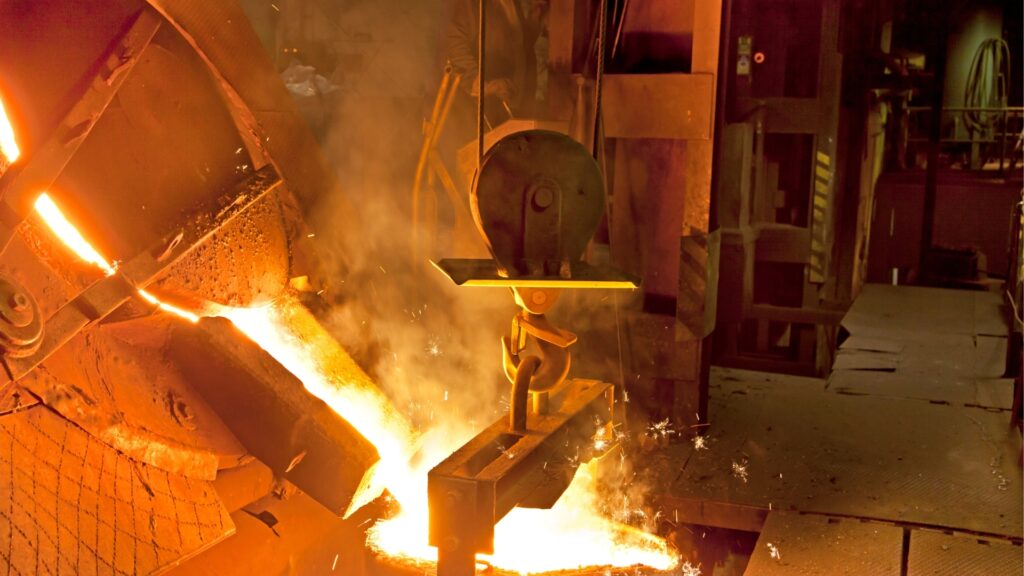Chenab Engineering a leader in foundry services, unveils its predictions for the industry’s exciting trajectory. This blog post dives deep into these key trends that will reshape the foundry landscape, encompassing advancements in technology, sustainability, workforce development, and market dynamics. By exploring these emerging trends, foundries can gain valuable insights to prepare for the future and ensure continued success in the ever-evolving world of metal casting.
1. The Rise of Additive Manufacturing (AM):
While traditional casting methods remain a cornerstone of the industry, Additive Manufacturing (AM) is poised for a remarkable surge in the foundry landscape. AM’s ability to produce lightweight designs makes it ideal for specialized applications. This technology will likely coexist with traditional casting, offering foundries a broader service portfolio.
2. Sustainable Practices: A Pressing Priority:
Environmental consciousness is rapidly gaining momentum, prompting foundries to embrace sustainable practices. This translates to utilizing recycled materials, minimizing energy consumption, and implementing strategies to reduce waste generation. Sustainable practices not only benefit the environment but also enhance a foundry’s reputation and social responsibility.
3. Material Innovation: Embracing the Cutting Edge:
The constant development of new and improved materials presents both challenges and opportunities for foundries. To stay ahead of the curve, foundries will need to adapt their services to cater to the specific characteristics of these innovative materials. This may involve acquiring new equipment or expertise to ensure they can effectively work with these materials and meet evolving customer demands.
4. Lightweight Casting: A Growing Demand:
The demand for lightweight components is on the rise across various industries, particularly automotive and aerospace. Foundries will need to develop expertise in lightweight casting techniques to cater to this growing need. This might involve exploring methods like lost-foam casting or employing lighter alloys to produce high-performance components without compromising on strength.

5. Data-Driven Decision Making: Powering the Future:
Data analytics is poised to become an indispensable tool for foundries. By meticulously analyzing process data, foundries can optimize production processes, pinpoint areas for improvement, and ensure consistent quality across their castings. This data-driven approach will lead to greater efficiency, reduced waste, and ultimately, a more competitive edge.
6. Cloud-Based Solutions: Embracing Agility:
Cloud-based solutions for data storage, management, and collaboration are expected to gain significant traction within the foundry industry. This shift towards the cloud offers numerous advantages, including improved accessibility of data from any location, enhanced scalability to meet changing needs, and robust security measures to protect sensitive information.
7. Building the Future Workforce: Investing in Skills:
The foundry industry faces a potential skills gap due to a shortage of qualified workers. To bridge this gap, foundries will need to invest in training programs and apprenticeships. By nurturing the next generation of foundry workers, they can ensure a future-ready workforce equipped with the necessary skills and knowledge to navigate the evolving industry landscape.
8. Quality Control: The Hallmark of Excellence:
Maintaining the highest quality standards is paramount for foundries to remain competitive. This will necessitate the adoption of advanced inspection techniques and the implementation of rigorous quality control procedures throughout the production process. By prioritizing quality, foundries can build trust with their clients and ensure the consistent delivery of defect-free castings.

9. Evolving Customer Needs: Adaptability is Key:
Customer needs are constantly evolving, demanding foundries to remain agile and adaptable. Foundries will need to be attuned to their client’s specific requirements in terms of lead times, customization options, and the increasing complexity of castings. By demonstrating adaptability and a willingness to cater to these evolving needs, foundries can foster stronger client relationships and secure future business.
10. A Globalized Market: Expanding Horizons:
The foundry industry is becoming increasingly globalized. Foundries will need to develop strategies to compete effectively in a global marketplace. This might involve international expansion to tap into new markets or establishing strategic partnerships with foundries in other regions to leverage combined expertise and resources.
11. Collaboration and Partnerships: Fostering Innovation:
Collaboration between foundries, material suppliers, and research institutions will be instrumental in accelerating innovation and improving overall industry efficiency. By sharing knowledge, expertise, and resources, these stakeholders can collectively develop new technologies and production methods, propelling the foundry industry toward a brighter future
Conclusion
By embracing the trends outlined by Chenab Engineering, foundries can position themselves for continued success. From integrating cutting-edge technologies like AM and automation to prioritizing sustainability and fostering a skilled workforce, foundries that adapt to these evolving demands will thrive in the years to come. Collaboration across the industry will be paramount in driving innovation and ensuring a bright future for the foundry sector. As Chenab Engineering looks ahead, we remain committed to providing exceptional foundry services and partnering with our clients to navigate this exciting new era.





